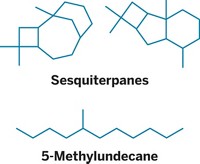Advertisement
Grab your lab coat. Let's get started
Welcome!
Welcome!
Create an account below to get 6 C&EN articles per month, receive newsletters and more - all free.
It seems this is your first time logging in online. Please enter the following information to continue.
As an ACS member you automatically get access to this site. All we need is few more details to create your reading experience.
Not you? Sign in with a different account.
Not you? Sign in with a different account.
ERROR 1
ERROR 1
ERROR 2
ERROR 2
ERROR 2
ERROR 2
ERROR 2
Password and Confirm password must match.
If you have an ACS member number, please enter it here so we can link this account to your membership. (optional)
ERROR 2
ACS values your privacy. By submitting your information, you are gaining access to C&EN and subscribing to our weekly newsletter. We use the information you provide to make your reading experience better, and we will never sell your data to third party members.
Environment
Fuel Made From Fats Helps Meet Diesel Demand
by Jessica Morrison
November 16, 2015
| A version of this story appeared in
Volume 93, Issue 45
A type of renewable diesel fuel produced by reacting vegetable oil or animal fat with hydrogen is helping meet growing demand for renewable biofuels, according to the U.S. Energy Information Administration. In a departure from predecessor biofuels made from alcohols, hydroprocessed esters and fatty acids (HEFA) fuels are hydrocarbons and nearly indistinguishable from traditional petroleum fuels. Because of their similarity to petroleum fuels, HEFA fuels can be used in diesel engines without blending with petroleum diesel fuel, EIA says. The standards organization ASTM International approved HEFA fuels for use in jet engines at up to a 50% blend. Since 2011, carriers including Alaska Airlines, KLM, and United have demonstrated the use of HEFA fuels on commercial flights. Currently, 10 plants worldwide produce renewable diesel, contributing some 380 billion L to meet global demand in 2014, EIA says.





Join the conversation
Contact the reporter
Submit a Letter to the Editor for publication
Engage with us on Twitter